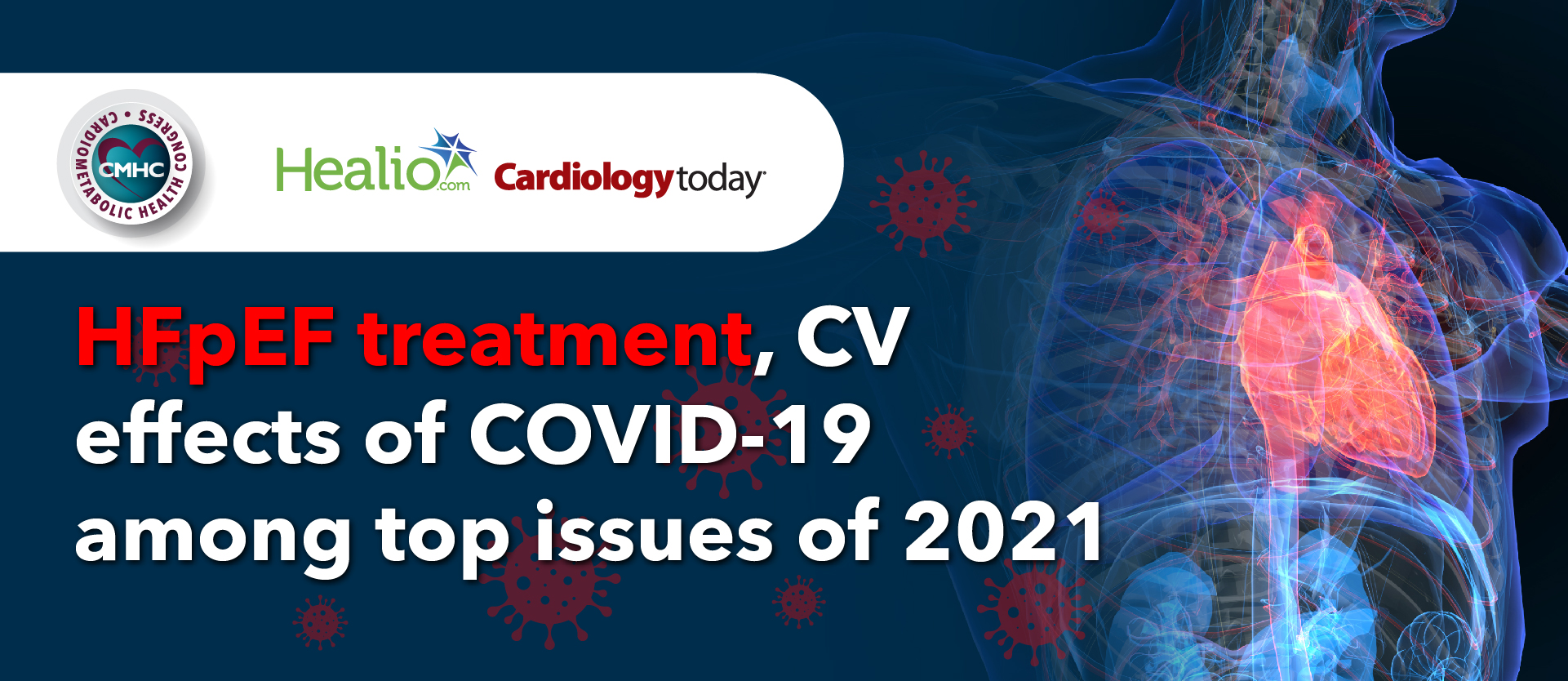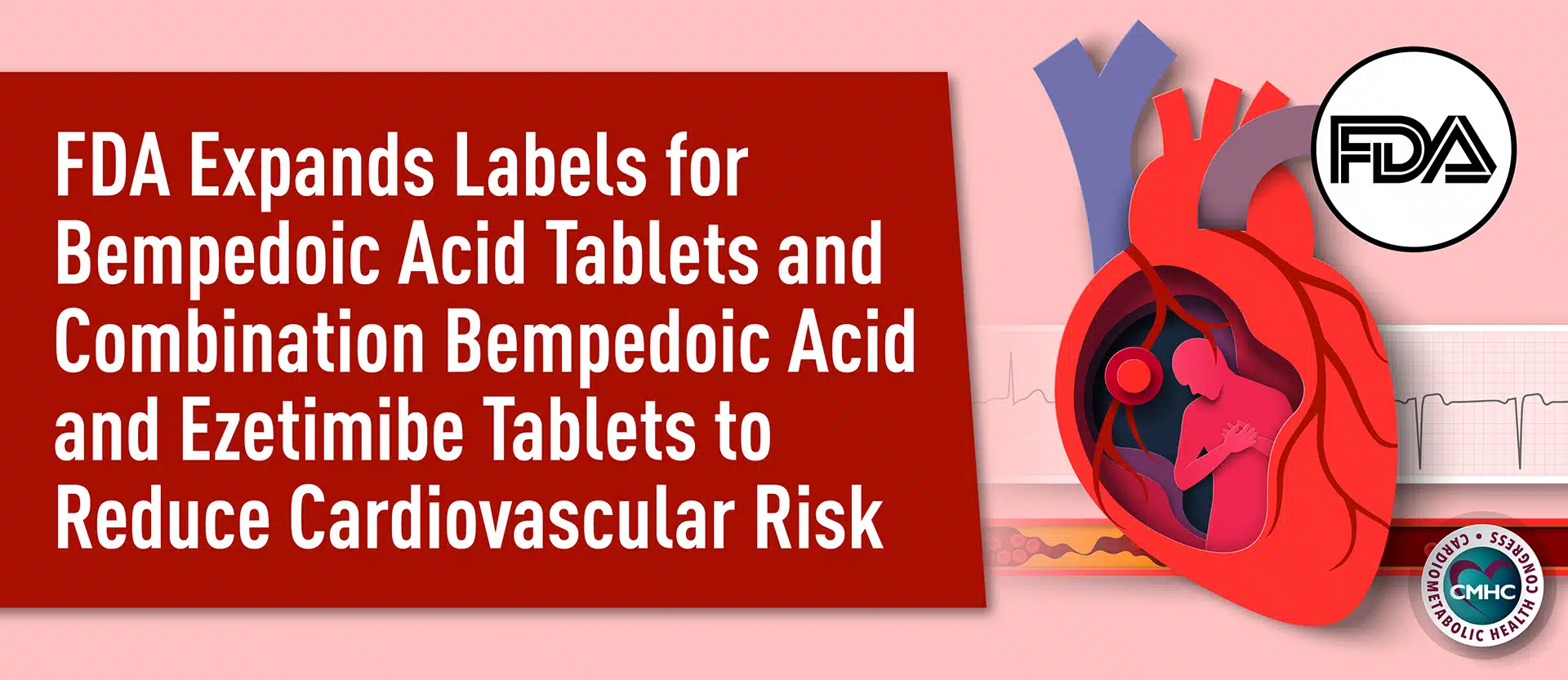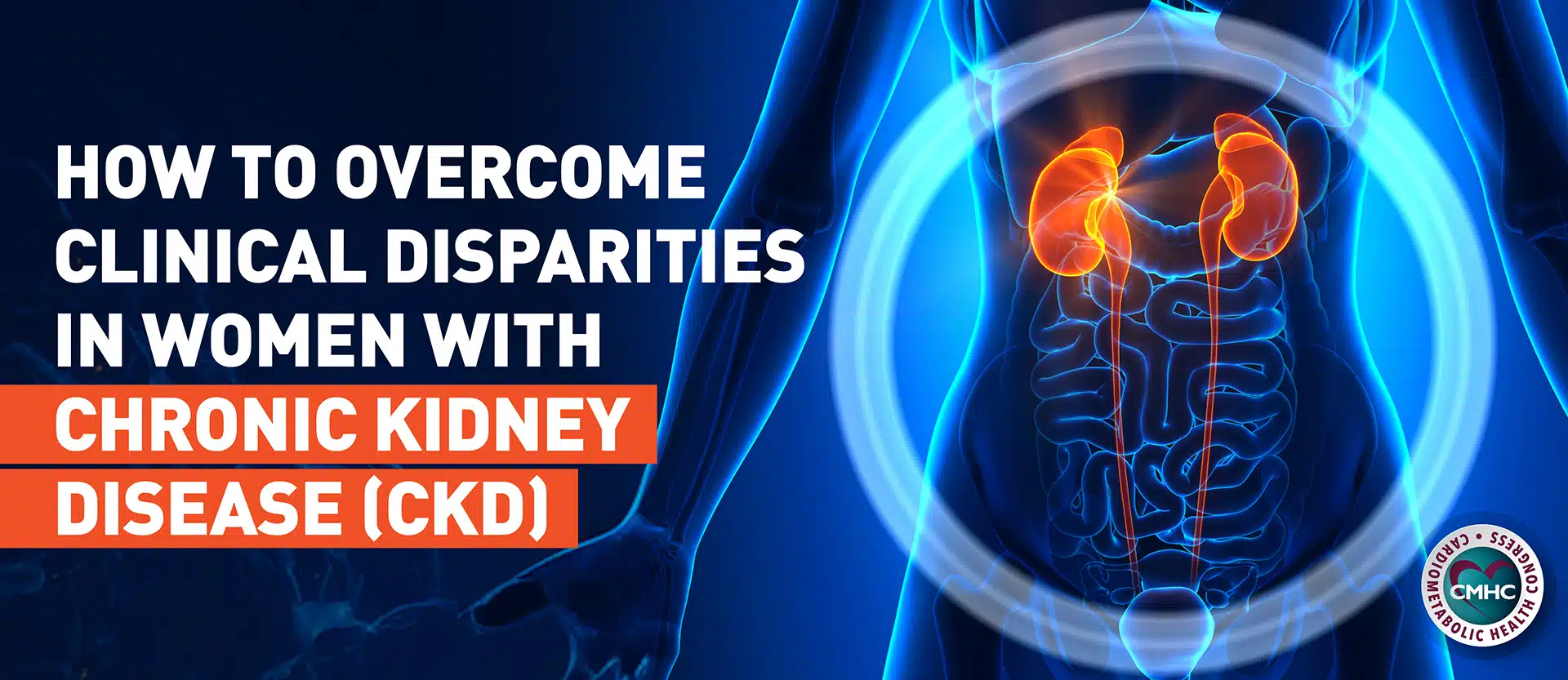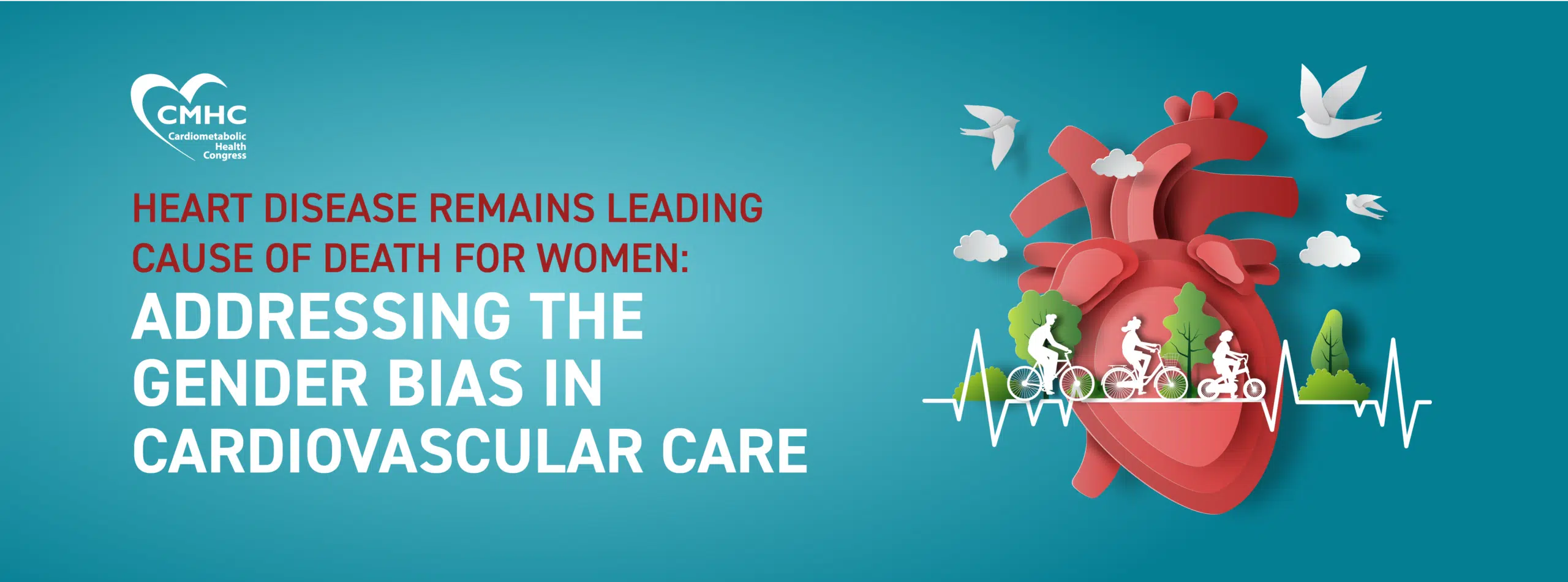This Healio/Cardiology Today article is published with permission from Healio.
As the COVID-19 pandemic continued to dominate the news, more was learned about its CV implications over the past year. However, the year also featured a number of important developments in other realms of cardiology. Cardiology Today asked members of its Editorial Board (several of whom are also Cardiometabolic Health Congress faculty) to expound on what they thought were some of the top stories of the year in the field, from COVID-19 and beyond:
- Seth J. Baum, MD, Charles E. Schmidt College of Medicine, Florida Atlantic University
“2021 saw many CV breakthroughs, but perhaps most consequential was the continued expansion of benefits for the SGLT2 inhibitors. Beyond reducing death and CV events in patients with type 2 diabetes and established CVD, which per se was a spectacular achievement, these medicines were approved to reduce the risk for progressive renal disease and hospitalizations for HF in select and even nondiabetic populations. The crowning SGLT2 inhibitor achievement came with EMPEROR-Preserved, when empagliflozin (Jardiance, Boehringer Ingelheim/Eli Lilly) became the first drug to benefit HF with preserved ejection fraction, achieving something of a holy grail in cardiology. And FDA responded in turn by quickly granting empagliflozin breakthrough therapy designation. 2022 and beyond will surely see this class of medicine continue to broaden its scope and further improve CV outcomes.
There are so many significant COVID-19-related CV stories for 2021 that to choose just one might be misleading. Myocarditis, from COVID-19 broadly and vaccines in young males more specifically, might seem the most obvious choice as the top candidate. But perhaps far more consequential will be the CV fallout from social isolation, lockdowns and other COVID-19-related phenomena. How many people stayed home instead of seeking medical attention in the face of cardiac symptoms, and consequently suffered MI, stroke and even death? What will the long-term cardiac effects be of children doubling their non-school-related screen time, substituting it for outdoor activities of exercise and socialization? How many friends and families have been torn apart and left with irreparable heartache by falling on the opposite sides of medical-political debates, and why should there even be any medical-political debates? Opioid deaths and suicides have skyrocketed, and cancer screens have plummeted; and although these events aren’t strictly cardiac, they will have downstream CV consequences for surviving families and friends. Thus, the most consequential COVID-19-related cardiac story of 2021 is I fear yet to come.”
- Javed Butler, MD, MPH, MBA, University of Mississippi
“Some of the most important developments in cardiology in 2021 included the FDA approval of inclisiran (Leqvio, Novartis) for LDL lowering in high-risk patients who cannot reach goal on diet, exercise and statin therapy alone; EMPEROR-Preserved, the first-ever positive trial in patients with HFpEF; data showing significant weight loss in patients with overweight or obesity who took semaglutide (Wegovy, Novo Nordisk); encouraging results from the FIGARO-DKD and FIDELIO-DKD trials of the mineralocorticoid receptor antagonist finerenone (Kerendia, Bayer) in patients with diabetic kidney disease at high risk for CVD; more data showing benefit of a polypill for patients with hypertension; and the SSaSS trial, which showed that switching from regular salt to a salt substitute reduced stroke risk by 14%.”
- Andrew E. Epstein, MD, University of Pennsylvania and Philadelphia VA Medical Center
“A significant topic that came into the spotlight in 2021 was the importance of rapid application and titration of all drugs for HF to achieve maximal benefit, which affects thousands of people. Most recently, a review published in November (Rosano GMC, et al. JACC Heart Fail. 2021;doi:10.1016/j.jchf.2021.06.011) proposed that “treatment layering” according to a patient’s heart rate, BP, renal function and electrolyte disturbances may benefit patients hospitalized for HF with reduced EF and reduce risk for CV death and rehospitalization soon after discharge.”
- Keith C. Ferdinand, MD, Tulane University School of Medicine
“More evidence emerged that SGLT2 inhibitors decrease CV mortality and hospitalization. EMPEROR-Preserved was the first study to show that pharmacotherapy improves major outcomes in patients with HFpEF and helps patients with HF across a wide range of EF.
RADIANCE-HTN showed that renal nerve ablation with advanced catheters may show a benefit in patients with difficult-to-treat hypertension. It showed an improvement in outcomes compared with the results of the SYMPLICITY-HTN 3 trial, which we thought would be the death knell for renal denervation. There is now evidence that newer catheters applied in the appropriate patients may make renal denervation an additional tool to treat resistant hypertension.
The American College of Cardiology and American Heart Association released the first guideline for chest pain. This gives clinicians an evidence-based pathway to approaching patients with chest pain. It will help clinicians make more appropriate decisions and potentially assist teams in approaching chest pain in a more objective and meaningful way.
The use of telehealth for CV evaluation and treatment, unmasked by the pandemic and confirmed by increasing data on its benefit, including Bluetooth BP devices and self-monitored devices for heart rate and heart rhythm, was another big development. These tools will be used increasingly to monitor patients with hypertension, atrial fibrillation and other CV conditions beyond the pandemic.
Also important were further recommendations of the need to address health care disparities, exacerbated by disparities in hospitalization and death by race and ethnicity in patients with COVID-19, and increasingly recognized across a wide range of conditions, including increased risk for hypertension, stroke, HF and CV mortality. The ACC published an extensive work group report on disparities and developed a policy statement, collected in a series of articles (Mensah GA, et al. J Am Coll Cardiol. 2021;doi:10.1016/j.jacc.2021.11.001).
There was also recognition of population-based sodium reduction to decrease BP. The FDA in October issued a voluntary guideline encouraging a 12% reduction in sodium content in U.S. food sources, 70% of which are processed foods. There was more confirmation that lower BP produces better outcomes in the 2021 Blood Pressure Lowering Treatment Trialists’ Collaboration report published in November in The Lancet. It showed a 5 mm Hg reduction in BP across a large population reduces a wide range of CV events, including HF, CAD and CV mortality. Left atrial appendage occlusion was confirmed to decrease stroke risk in patients with AF intolerant of anticoagulation.”
- Matthew W. Martinez, MD, Morristown Medical Center
“There were quite a few important studies that came out in 2021 on the CV implications of COVID-19. A study performed by my team found that professional athletes who had COVID-19 rarely presented with cardiac events or injury after undergoing return-to-play testing (Martinez MW, et al. JAMA Cardiol. 2021;doi:10.1001/jamacardio.2021.0565). Another study in collegiate athletes produced similar results (Moulson N, et al. Circulation. 2021;doi:10.1161/CIRCULATIONAHA.121.054824). Also crucial was what we learned about myocarditis risks after COVID-19 vaccination. For example, a study published in JAMA Internal Medicine in October (Simone A, et al. JAMA Intern Med. 2021;doi:10.1001/jamainternmed.2021.5511) found that acute myocarditis was rare in people who received at least one dose of a messenger RNA vaccine for COVID-19, and that it occurred almost entirely in young males.
Among developments not related to COVID-19, the most important included the results of the LAAOS III trial, which found that among patients with AF who underwent cardiac surgery, concomitant closure of the left atrial appendage reduced risk for ischemic stroke and systemic embolism; and the STEP 1 trial showing semaglutide conferred sustained weight loss in patients with overweight or obesity. This represents a big advance in the treatment of this growing condition.”
- Ileana L. Piña, MD, MPH, Central Michigan University College of Medicine and Case Western Reserve University
“The most important development of 2021 was the EMPEROR-Preserved trial of empagliflozin, which was positive for its primary endpoint across a broad range of EFs. This gives clinicians a new tool to treat HFpEF, for which previous trials have been disappointing.”
- Andrea M. Russo, MD, Cooper Medical School of Rowan University
“In addition to caring for patients with COVID-19 during the pandemic, we were able to demonstrate that we can still provide high-quality and safe care for patients who do not have COVID-19. Working with the Heart Rhythm Society and our international partners involved in the care of patients with heart rhythm disorders, we were able to collaborate with other societies to establish guidance documents to assist health care providers in the care for patients with arrhythmias, working together to avoid unnecessary delays in care.
In 2021, clinical trials demonstrated the importance of early rhythm control of AF. Early treatment of AF (within 1 year since diagnosis) with rhythm control therapy was associated with lower risk for adverse CV outcomes compared with rate control. This highlights the need to treat patients early with rhythm control to maintain sinus rhythm with the goal of preventing adverse electrical and structural remodeling that can make it more difficult to treat AF in the long run.”


















